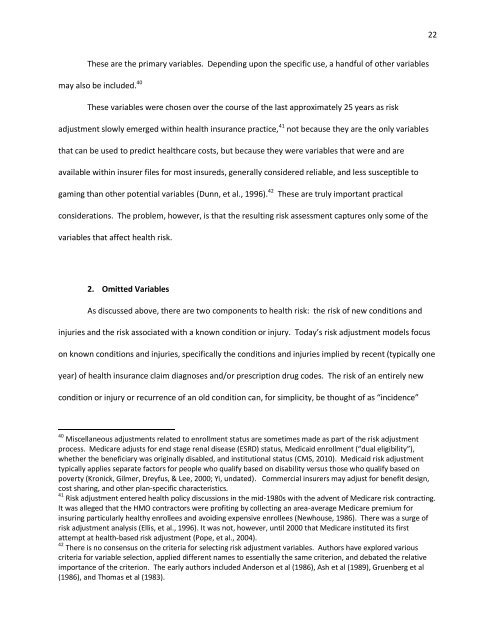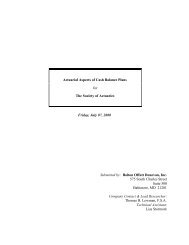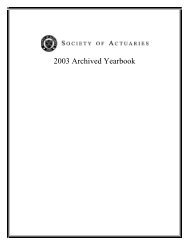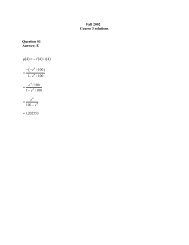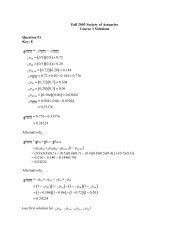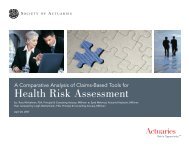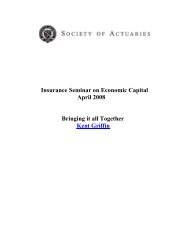Controlling Indirect Selection under Healthcare Reform - Society of ...
Controlling Indirect Selection under Healthcare Reform - Society of ...
Controlling Indirect Selection under Healthcare Reform - Society of ...
You also want an ePaper? Increase the reach of your titles
YUMPU automatically turns print PDFs into web optimized ePapers that Google loves.
22<br />
These are the primary variables. Depending upon the specific use, a handful <strong>of</strong> other variables<br />
may also be included. 40<br />
These variables were chosen over the course <strong>of</strong> the last approximately 25 years as risk<br />
adjustment slowly emerged within health insurance practice, 41 not because they are the only variables<br />
that can be used to predict healthcare costs, but because they were variables that were and are<br />
available within insurer files for most insureds, generally considered reliable, and less susceptible to<br />
gaming than other potential variables (Dunn, et al., 1996). 42<br />
These are truly important practical<br />
considerations. The problem, however, is that the resulting risk assessment captures only some <strong>of</strong> the<br />
variables that affect health risk.<br />
2. Omitted Variables<br />
As discussed above, there are two components to health risk: the risk <strong>of</strong> new conditions and<br />
injuries and the risk associated with a known condition or injury. Today’s risk adjustment models focus<br />
on known conditions and injuries, specifically the conditions and injuries implied by recent (typically one<br />
year) <strong>of</strong> health insurance claim diagnoses and/or prescription drug codes. The risk <strong>of</strong> an entirely new<br />
condition or injury or recurrence <strong>of</strong> an old condition can, for simplicity, be thought <strong>of</strong> as “incidence”<br />
40 Miscellaneous adjustments related to enrollment status are sometimes made as part <strong>of</strong> the risk adjustment<br />
process. Medicare adjusts for end stage renal disease (ESRD) status, Medicaid enrollment (“dual eligibility”),<br />
whether the beneficiary was originally disabled, and institutional status (CMS, 2010). Medicaid risk adjustment<br />
typically applies separate factors for people who qualify based on disability versus those who qualify based on<br />
poverty (Kronick, Gilmer, Dreyfus, & Lee, 2000; Yi, undated). Commercial insurers may adjust for benefit design,<br />
cost sharing, and other plan-specific characteristics.<br />
41 Risk adjustment entered health policy discussions in the mid-1980s with the advent <strong>of</strong> Medicare risk contracting.<br />
It was alleged that the HMO contractors were pr<strong>of</strong>iting by collecting an area-average Medicare premium for<br />
insuring particularly healthy enrollees and avoiding expensive enrollees (Newhouse, 1986). There was a surge <strong>of</strong><br />
risk adjustment analysis (Ellis, et al., 1996). It was not, however, until 2000 that Medicare instituted its first<br />
attempt at health-based risk adjustment (Pope, et al., 2004).<br />
42 There is no consensus on the criteria for selecting risk adjustment variables. Authors have explored various<br />
criteria for variable selection, applied different names to essentially the same criterion, and debated the relative<br />
importance <strong>of</strong> the criterion. The early authors included Anderson et al (1986), Ash et al (1989), Gruenberg et al<br />
(1986), and Thomas et al (1983).


